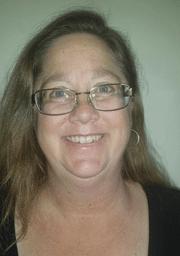
Lauren Levin was diagnosed with Gaucher disease in 1988, when she was 19.
The Olathe resident said she had experienced symptoms of the genetic disease all her life, but that summer she was hemorrhaging from an injury she’d suffered, so she went to see a doctor.
“The doctor originally thought I had leukemia but kept looking and determined it was Gaucher,” she said.
Gaucher (pronounced go-SHAY) disease occurs more frequently in Ashkenazi Jews than in Jews of other ancestry, and more frequently than in the general population. One in 10 Ashkenazi Jews carries the Gaucher gene, and the disease commonly goes undiagnosed.
The Jewish Community Center (The J) is hosting an educational program Thursday evening, Aug. 18, to share the latest information on genetic conditions that occur more frequently in the Jewish community, including Gaucher disease. (See box for more details.) Levin plans to attend the program, and its organizers have asked her to speak to attendees.
Levin’s systems included bone pain, caused when “the lining of the bones deteriorates and it hurts, but we didn’t know at the time that that’s what it was,” she said. She also had fatigue, anemia, unusual bleeding and an enlarged spleen.
Drug therapy keeps her symptoms mostly under control, she said, though she still has some fatigue.
She explains the disease as “a lipid-storage disorder.”
“I usually tell people there’s a certain kind of fat in our bodies (and) most people have an enzyme that breaks it down, and I don’t have the enzyme,” she said.
Levin’s two children carry the Gaucher gene but don’t have the disease, because her husband doesn’t carry the gene, she said. The disease can surface only if both parents carry the gene. Her parents carried the gene but didn’t have the disease, though her sister does.
Asked whether she recommended testing for the disease, Levin said “Yes, absolutely.”
“My personal opinion is you’re better off knowing,” she said.
Her daughter plans to marry next year, and Levin advised her and her fiancé to get tested.
“Luckily for me, this disease is very treatable,” she said. “Treatment can start early, so to know about it ahead of time means your child doesn’t have to experience the symptoms.”
The J’s program is important, Levin said, because she wants to educate people about the disease and that “it’s not (only) a Jewish disease.”
“You do not have to have a Jewish ancestor, though there is a higher incidence among Ashkenazis,” she said. “We’ve come so far to even be able to have these genetics available. … It’s heartbreaking that people might not be aware of that.”
Gaucher disease was first described as a clinical syndrome in 1882 by French physician Philippe Charles Ernest Gaucher. Its most common symptoms are enlarged liver and spleen; anemia; fatigue; nosebleeds; reduced number of platelets, which results in easy bruising and increased time necessary for blood clotting; bone pain; bone deterioration; infarctions, which often lead to damaged shoulder or hip joints; and osteoporosis, which can cause spontaneous fractures.



